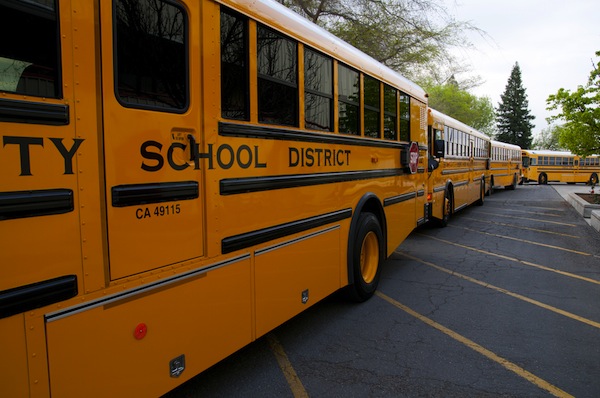Simplified California School Funding Marred By Accountability Issues

 Richard Thornton / Shutterstock.com
Richard Thornton / Shutterstock.com
Yesterday marked the start of the traditional school year. For the first time in five years, California schools will experience a significant increase in funding. This came out of the state legislature's and Governor Brown's local control funding formula (LCFF) and a healthy stream of revenue.
However, as schools receive the new funds, the California Department of Education must still figure out how to track whether or not the dollars are effective and being spent properly.
The 2013-2014 school year is an important transitional year since it's the first year of LCFF implementation. An extra $2 billion will be allocated to school districts across the state.
School administrators may be hesitant to make big spending decisions with that money. LCFF included the freedom for school districts to spend as they see fit, but districts will be held accountable for that spending through measures which are currently unknown.
The State Board of Education (SBE) is responsible for the development of those measures, essentially creating a template. Once the template is developed, districts can create their own local control accountability plans (LCAPs).
According to California's Education Code, summarized by SI&A Cabinet Report, the following is the timeline to develop accountability measures:
On or before Jan. 1, 2014, the SBE must review for approval the updated standards and criteria for use by Local Education Agencies (LEAs) in the adoption of local budgets.Before Jan. 30, 2014, the SBE must review for approval the Public School Accountability Act (PSAA) Advisory Committee recommendations for changes to the Academic Performance Index based on the LCFF.By Jan. 31, 2014, the SBE must review for approval spending regulations that clarify how expenditures of funds should be managed to demonstrate compliance.On or before March 31, 2014, the SBE must review for approval the local control and accountability plan templates for use by LEAs to support local adoption and annual review of the LCAP.On or before Oct. 1, 2015, the SBE must review for approval evaluation rubrics that provide a “holistic multidimensional assessment” of LEA strengths and weaknesses to be used by entities providing technical assistance and evaluating LEAs that may need intervention.
The State Board of Education continues to hold hearings with stakeholder input on which spending regulations would be most effective and viable.
California school funding is still being developed, despite Gov. Brown and education advocates' long battle for increased budgets. Securing school funding was only half the work for the state. Throwing money at education is not effective policy, which is why the state is careful to develop spending guidelines.



